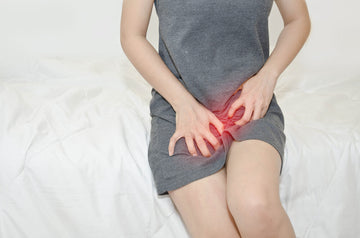Perimenopause, often referred to as the transition phase before menopause, is a natural biological process that marks the end of a woman’s reproductive years. Typically occurring in the late 30s to 40s, it is characterized by fluctuating hormone levels, primarily estrogen and progesterone, leading to a variety of physical and emotional symptoms. Common signs include irregular menstrual cycles, hot flashes, night sweats, mood swings, sleep disturbances, and changes in libido. While perimenopause is a normal phase of life, its symptoms can be challenging for many women. Treatments, ranging from lifestyle modifications and natural remedies to hormone replacement therapy, aim to manage discomfort and improve overall well-being during this transitional stage.
What is Perimenopause?
Perimenopause is the natural transitional phase leading up to menopause, during which a woman’s body undergoes hormonal changes as it prepares to end its reproductive years. This stage typically begins in a woman’s late 30s or 40s and can last several years, varying from person to person.
During perimenopause, the ovaries gradually produce less estrogen and progesterone, causing irregular menstrual cycles and a range of symptoms such as hot flashes, night sweats, mood swings, sleep disturbances, and vaginal dryness. While it is a normal part of aging, the symptoms can impact a woman’s quality of life.
When Does it Usually Occur?
When it comes to hormonal changes in the body, such as a decrease in estrogen levels, they can begin 8 to 10 years before menopause. Most women show evidence of this in their 40s, although some can show signs as early as their mid-thirties.
Most women experience perimenopause when their estrogen levels begin to drop in their mid to late 40s. If a menstrual cycle fluctuates by seven or more days or if a period occurs at least once every three months, it can be recognized.
How Long Does It Last?
Perimenopause lasts about 4 years on average. It can last as little as a few months or two years in some ladies or up to ten years in others. If a woman has gone 12 months without having a period, a doctor will confirm the end of the perimenopausal phase.
Perimenopause Symptoms
i). Changes in menstrual cycle length, flow, and frequency.
ii). Sudden feelings of heat are often followed by sweating, especially at night.
iii). Increased irritability, anxiety, or feelings of sadness due to hormonal changes.
iv). Trouble falling asleep or staying asleep, often due to night sweats or hormonal imbalances.
v). Feeling more tired or lacking energy throughout the day.
vi). Decreased estrogen can lead to dryness, discomfort, or pain during sex.
vii). Difficulty focusing or remembering things is sometimes referred to as "brain fog."
What Are The Treatment Options For Perimenopause?
To alleviate the symptoms of perimenopause, there are numerous therapy options available. They are as follows:
i). Hormone Therapy – The abrupt decline in estrogen levels creates unpleasant symptoms in the body, with the added benefit of a lower risk of osteoporosis. Oral pills, lotions, gels, and skin patches can all deliver this hormone to the body. Hot flashes are occasionally treated with progesterone injections.
ii). Medication – Various medications are used to treat varied symptoms. Hot flashes and mood swings can be treated with birth control, and antidepressants can be used for problematic PMS symptoms, including emotional imbalance. Prescription vaginal creams are offered to treat vaginal dryness.
iii). Home Remedies- While medical therapy is an option, various things can be done at home to lessen the symptoms’ effects. Exercising, stopping smoking, limiting alcohol intake, having a regular sleep cycle, getting enough calcium, and eating a balanced diet can help you lose weight. For many women, limiting caffeine use can be advantageous.
Premenopause Vs. Perimenopause
People often use both terms interchangeably. However, there is a difference between the two.
i). Premenopause is the time in a woman’s life when she begins to transition into the menopausal stage. It differs from perimenopause in that there are usually no apparent changes or symptoms associated with menopause.
ii). On the other hand, her body may be undergoing hormonal changes already. Even if the person does not have regular periods, she is still regarded as being in her reproductive years but on the decline.
iii). This is when she enters her menopausal years for the first time. The difference is that hormonal changes happen more quickly, and there are a variety of symptoms that can appear as her fertility begins to wane.
Can You Get Pregnant During Perimenopause?
Even with reduced fertility, a woman can conceive during her perimenopausal years. Conceiving gets more complicated after she reaches her late 30s, but because her ovaries are continuously producing eggs, a pregnancy is still possible.
If you don’t want to get pregnant, it’s a good idea to use hormonal birth control. If getting pregnant is the objective, there are a variety of fertility treatment alternatives to consider.
How Is Perimenopause Different From Menopause?
Perimenopause is the period between menopause and the onset of menopause. During the perimenopausal phase, menstruation continues, and several symptoms begin to signal a rapid drop in hormone levels.
Some of the symptoms are similar to those associated with menopause. However, a lady is deemed to be in menopause when she hasn’t bled for 12 months in a row.
What Can Cause Perimenopause To Start Earlier Than Usual?
Even though menopause is a natural part of a woman’s life, certain events can cause her to enter the perimenopausal stage early. These are some of them:
i). Smoking
ii). If there is a pattern of early menopause in the family,
iii). Chemotherapy or radiation therapy
iv). Hysterectomy or the removal of the uterus
When To See A Doctor?
The symptoms can usually be managed at home. However, if any of the following situations arise, a doctor should be consulted:
Heavy bleeding that necessitates changing tampons, pads, or draining menstrual cups every hour or two
i). Your periods last more than seven days.
ii). Between your menstrual periods, you may experience bleeding. A cycle that lasts less than 21 days
iii). After sex, there is bleeding and the formation of larger-than-normal blood clots.
In addition, if the symptoms become severe and interfere with daily life, a doctor should be consulted.
Conclusion
Perimenopause is a natural phase of life that signals the transition to menopause, bringing various physical and emotional changes. While symptoms such as irregular periods, hot flashes, mood swings, and sleep disturbances can be challenging, they are manageable with the right approach. Treatments, including hormone replacement therapy, lifestyle adjustments, and natural remedies, can significantly alleviate discomfort and promote well-being. It is essential for women to seek medical guidance to tailor treatments to their specific needs and address any concerns. Embracing this phase with awareness and support enables women to navigate it more confidently, ensuring a smoother journey into menopause and the next chapter of life.





